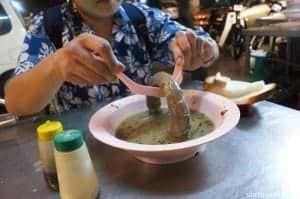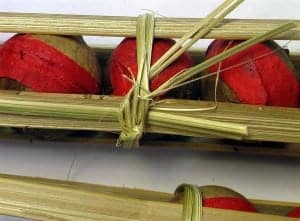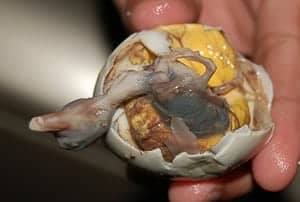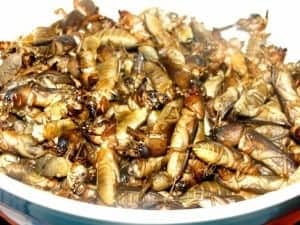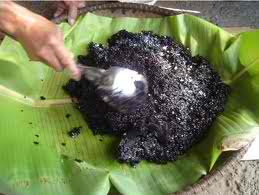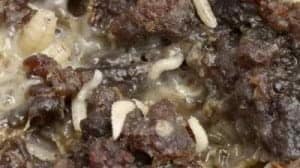Top 10 Most Bizarre Filipino Foods
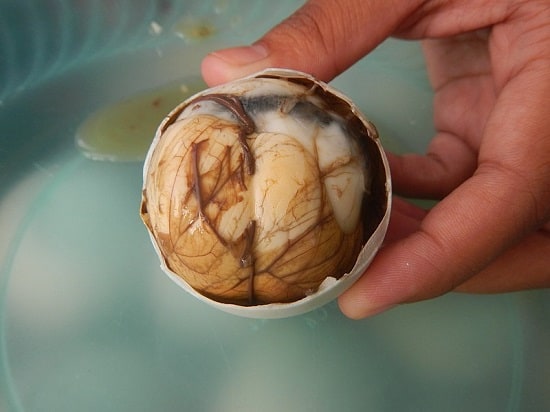
It’s amazing to witness how diverse Filipino cuisine has become. And speaking of “diverse”, it’s even more fascinating how our kababayans apply both creativity and resourcefulness to come up with the next big dish. For some, it’s an issue of survival while ethnic groups do it in the name of their age-old traditions.
Also Read: Why Do Filipinos Love To Eat Rice? (And Other Yummy Pinoy Food Facts)
So rich is our culture that bizarre Filipino foods came sprouting everywhere. Listed below are some of the weirdest foods to ever come across the Filipino taste buds. Let your eyes and imagination be the judge.
10. Soup No. 5
Made from: Bull’s testes and penis.
Yuck factor: If you’re a brave foodie and looking for the next aphrodisiac to try, Soup no. 5 should be a hot pick. But not for those whose stomach turns at the sight of exotic foods. For one, Soup no. 5 is made from a bull’s sex organs—considered by many as the “fifth leg” of the animal, hence the name. Cebuanos know it as “lanciao” and is believed to give the physical attributes of a bull to anyone willing to take a sip.
Nutrition-wise, a serving of Soup no. 5 gives less zinc (the mineral which increases libido) when cooked. Nevertheless, it remains a fantastic choice for those who are either bored with bulalo or craving for an unusual beer match.
9. Sundot Kulangot
Made from: Gelatinous rice (kalamay) cooked with brown sugar and coconut milk.
Yuck factor: By just its name alone, sundot kulangot can scare away picky eaters. It literally means “poke a snot” or “pick a booger”, describing the bizarre way of eating it. But despite its name, there’s nothing gross about this traditional candy.
Packaged within small wooden orbs, sundot kulangot are actually sweet, pinch-sized delicacies that taste like our traditional coconut jams. One must break the orb and use either a popsicle stick or one’s own finger to get a taste of the candy. Thanks to its tedious preparation, sundot kulangot is now becoming a rarity with its limited supply being sold in Baguio City and other Northern Luzon provinces.
8. Crispy Chicken Nails
Made from: Chicken nails (Yes. Those sharp, pointed parts that usually end up in the trash bin).
Yuck factor: You don’t need a wild imagination to realize that feet are one of the dirtiest parts of the body—be it in chickens or humans. Yet, most of us won’t mind eating chicken feet either as adobo or sinigang. For some people, however, the term “waste not, want not” also means that no part of the chicken, including its nails, is ignored. In fact, an episode of Kapuso Mo, Jessica Soho featured how to properly clean, prepare, and fry the breaded chicken nails. The taste test generated positive feedback so if you’re in the mood for experimentation, crispy chicken nails is definitely a must-try.
7. Balut
Made from: Eleven-day old duck egg, boiled to perfection.
Yuck factor: If you have ever watched past seasons of Fear Factor or Survivor, then you probably know how horrified foreigners can be by the mere sight of balut. For them, tasting a balut is worse than skydiving without a parachute. In fact, balut has long been known as El Dorado of bizarre edible items. But do all Filipinos think otherwise? Judging by the slimy texture and the bizarre appearance of the feathery duck fetus, I’m sure a lot of Filipinos detest balut as well. Add to that the half-formed head, guts, beak, and bones of the poor duck and you’ll have a recipe for the ultimate scary food.
6. Kamaru
Made from: Mole or rice field crickets.
Yuck factor: The fact that it emerged from the country’s culinary capital means there’s something delectable about kamaru. But for non-Kapampangans, it’s harder to muster the courage to feast on this exotic dish, especially when the image of dirty, crawling insects keep on popping up. The unusual crunchiness and the juice coming out from the insect’s abdomen also add up to its “yucky” factor. But if prepared and cooked right, perhaps an adobong kamaru may inspire the adventure foodie out of you.
5. Pinikpikan
Made from: Native chicken beaten to death through a process called “pikpik” from which the dish got its name.
Yuck factor: The Bontoc tribe of the Cordillera region must have been hated by animal welfare groups. Blame it on traditions but this group prefers to torture their chickens before boiling it with salt and cured pork (etag). They believe that lightly beating the chicken with a stick tenderizes and boosts the flavor of the meat. But utmost care is required to get that perfect Pinikpikan. An ideal chicken should not be bloody after beating with its bones still intact.
4. Tuslob-Buwa
Made from: Pork brain and liver cooked with chili, salt, and other spices.
Yuck factor: Resourceful Filipinos will always find a way to make the most of what they have. And that includes making sure that no part of the swine goes into waste. In Pasil, Cebu, for instance, pork brain and liver are cooked thoroughly with spices until the sauce thickens. You know the dish is ready to serve when bubbles appear in the surface which then explains why Tuslob-Buwa literally means “dipping bubble”. Anyone can get a taste of this exotic dish as long as you buy rice ball (which locals call “puso”) from street peddlers. Tuslob-buwa perfectly complements the rice ball the way dinuguan does to puto.
3. Lepeg
Made from: Fermented rice or the residue from which tapuy or rice wine is extracted.
Yuck factor: Important celebrations in Mountain Province won’t be complete without a bottle of traditional rice wine called tapuy. Just like their intricate ceremonies, the process of making this alcoholic drink is also a bit complex and time-consuming. A special variety of cooked red rice called balatinaw is left fermenting inside a jar for 20 days. Once the liquid part (tapuy) is harvested, the residue (lepeg) is then served with fresh chicken blood. The taste is a bit sour while the long process of storage gives lepeg a distinct or even repulsive smell.
2. Tamilok

Made from: Raw tamilok (shipworm) marinated in a mixture of vinegar, chili, and onions.
Yuck factor: It’s slimy, salty, and nowhere near appetizing. But to make your Palawan adventure memorable, local guides will tell you that tamilok is really worth a try. Tamilok usually bores into wooden structures and mangroves that are abundant in the municipalities of Coron, El Nido, and Linapacan. Eating a tamilok also means munching on pests because these creatures destroy every wood they come across, giving them the name “termites of the sea”.
1. Etag
Made from: Native pork that is cured by either smoking or storing in earthen jars for weeks (binurong baboy)
Yuck factor: Etag is Sagada’s official ham. In fact, this patent-pending meat delicacy has a festival named after it. Etag is prepared by salting the pork and curing it either by smoking or storing in earthen jars for several weeks. Foul-smelling, dark, and rotting with maggots, the final product is exactly not for the faint at heart. Nevertheless, Cordillera traditions won’t be complete without this local meat favorite. And with current plans of standardizing its preparation and improving its culinary taste, it won’t take too long before Etag captures our taste buds as well.
FilipiKnow
FilipiKnow strives to ensure each article published on this website is as accurate and reliable as possible. We invite you, our reader, to take part in our mission to provide free, high-quality information for every Juan. If you think this article needs improvement, or if you have suggestions on how we can better achieve our goals, let us know by sending a message to admin at filipiknow dot net
Copyright Notice
All materials contained on this site are protected by the Republic of the Philippines copyright law and may not be reproduced, distributed, transmitted, displayed, published, or broadcast without the prior written permission of filipiknow.net or in the case of third party materials, the owner of that content. You may not alter or remove any trademark, copyright, or other notice from copies of the content. Be warned that we have already reported and helped terminate several websites and YouTube channels for blatantly stealing our content. If you wish to use filipiknow.net content for commercial purposes, such as for content syndication, etc., please contact us at legal(at)filipiknow(dot)net
